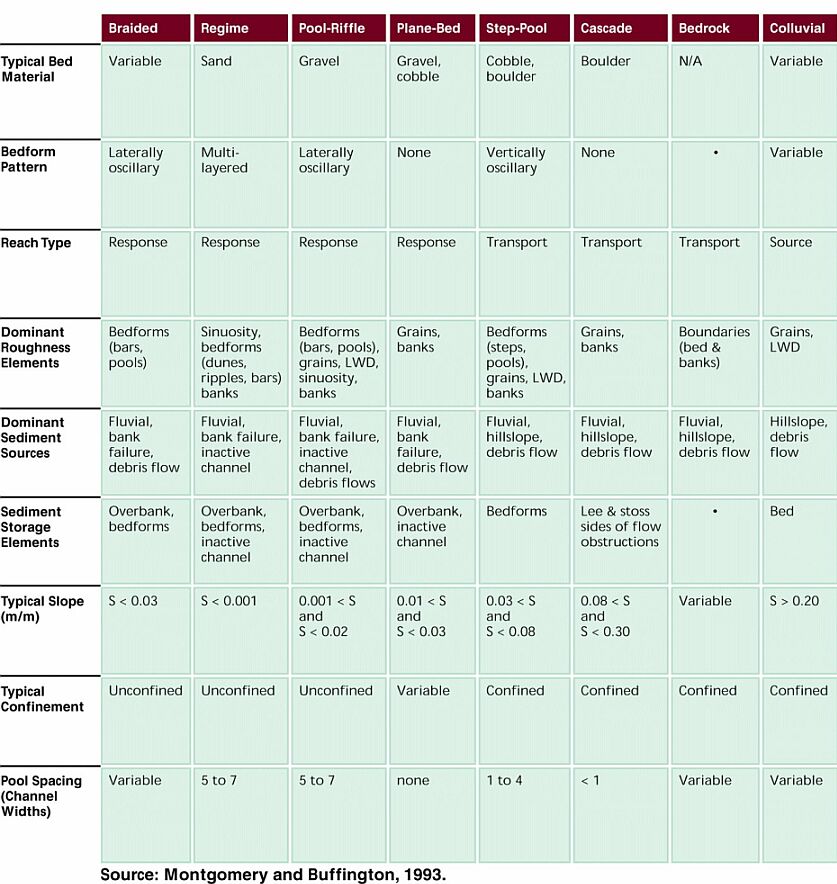
| glossary | menu | Normal | lg | hc | 4.) Geomorphologic Classification Systems > Montgomery-Buffington Classification Table |
| < Previous | 1 | 2 | 3 | 4 | 5 | 6 | 7 | 8 | 9 | 10 | 11 | 12 | 13 | 14 | 15 | 16 | 17 | 18 | 19 | 20 | 21 | 22 | 23 | 24 | 25 | 26 | 27 | 28 | 29 | 30 | 31 | 32 | 33 | 34 | 35 | 36 | 37 | Next > |
Montgomery-Buffington Classification Table

In mountainous systems, particularly those of the Pacific Northwest US, matrices have been constructed by Montgomery and Buffington to classify physical characteristics and processes of the rivers. This classification extends beyond the work of Leopold and Schumm in straight, Meandering, and braiding rivers through Alluvial material, and considers Colluvial and bedrock systems.
Montgomery and Buffington developed this classification to characterize the relative response of a river to sediment inputs. This system classified six Alluvial Stream types as braided, regime, pool-riffle, plane-bed, step-pool, and cascade, and then included the bedrock and Colluvial Stream types to create eight classes of channel.
Reach types are differentiated based on relative treatment of sediment inputs, as shown in the third row of this table. Colluvial Streams are shown as sources of sediment, bedrock and Alluvial cascade and step-pool Streams as transport, and then the four remaining Alluvial Streams as response, or storage systems. The matrix shown here further classifies the typical bed material and bedform pattern (rows 1 and 2), as well as the dominant roughness elements and sediment sources (rows 4 and 5). Typical slopes indicate that the Streams steepen moving right to left in the matrix, and pool spacing generally narrows with increasing slope.
Image courtesy of FISRWG
| < Previous | 1 | 2 | 3 | 4 | 5 | 6 | 7 | 8 | 9 | 10 | 11 | 12 | 13 | 14 | 15 | 16 | 17 | 18 | 19 | 20 | 21 | 22 | 23 | 24 | 25 | 26 | 27 | 28 | 29 | 30 | 31 | 32 | 33 | 34 | 35 | 36 | 37 | Next > |